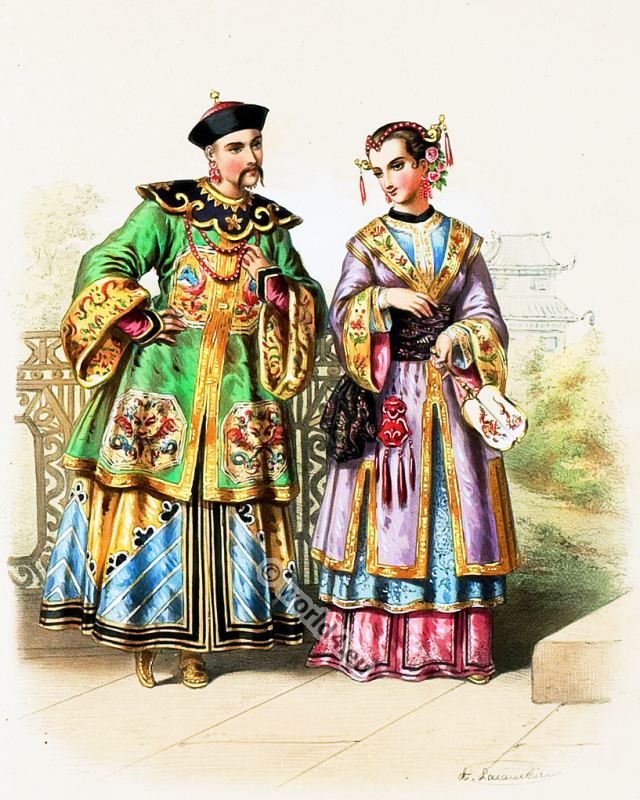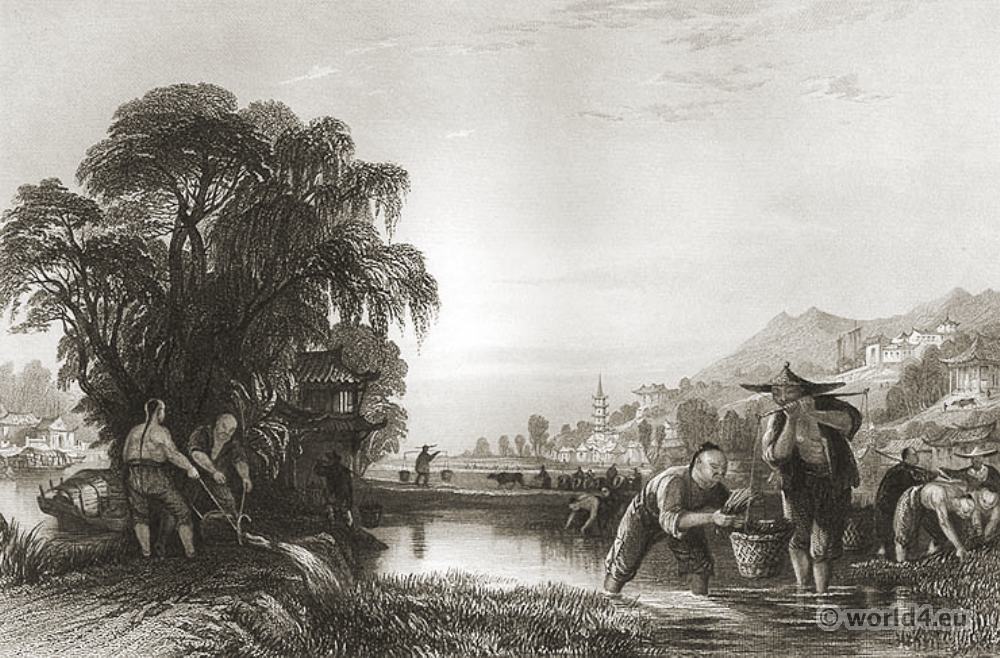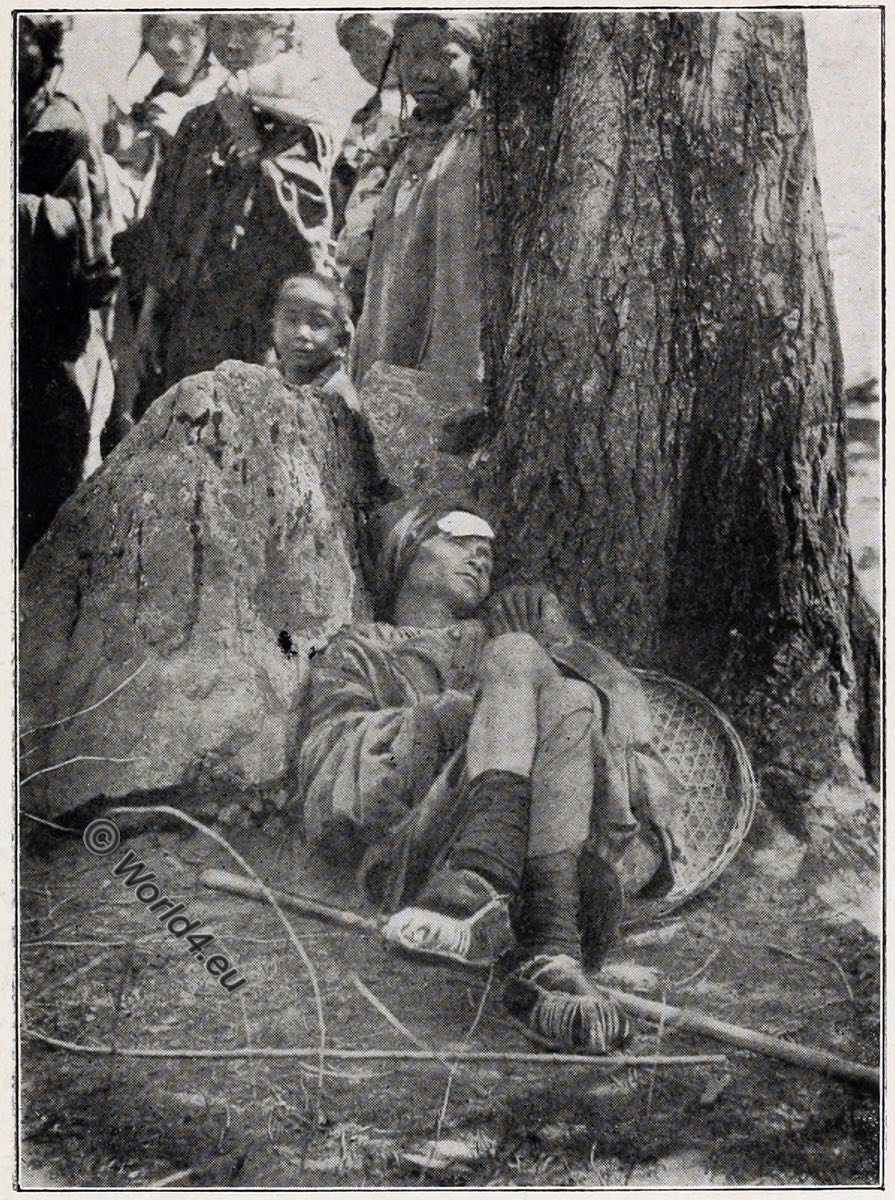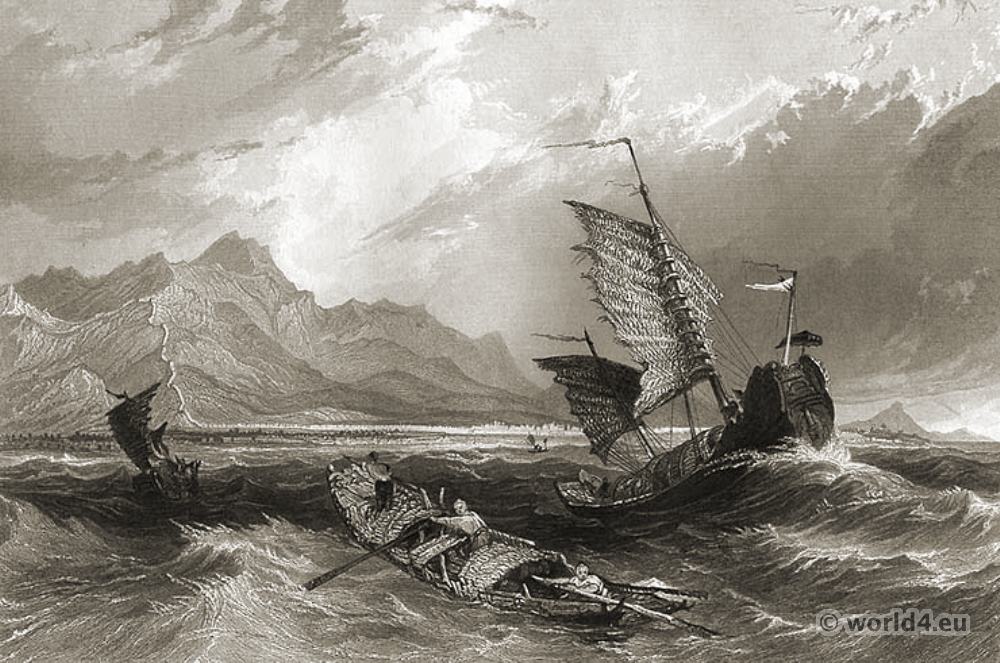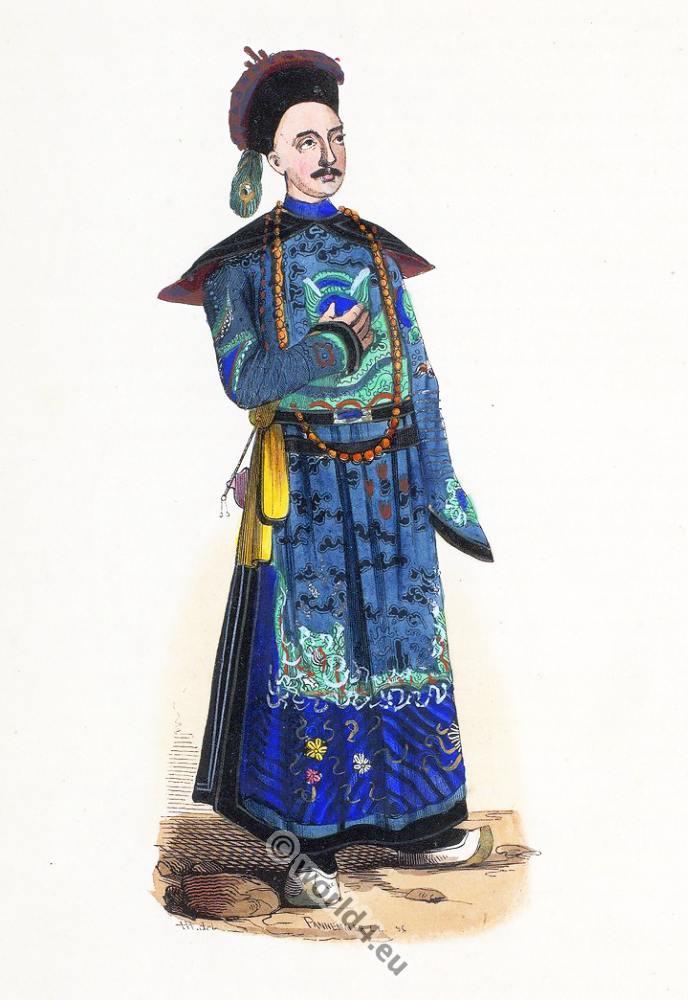In Ngan-hwei, paper-houses are burnt to convey necessities to the deceased, a persistent ancient custom.
SENDING PAPER-HOUSES TO THE DEAD. Chi-fang-tze
by Henri Doré.
In the province of Ngan-hwei, it is customary at the death of a person to offer him a paper-house, as well as the implements, clothes and precious objects, which he was wont to use while living. All these paper articles are burnt, and thus conveyed to the departed soul (Yin hsüeh kau sui pih).
Paper-houses, similar to the above, are also used throughout Kiang-su province. The framework is made of reed-splints, covered over with paper of various hues. The parlour, inner passageways and rooms, resemble as closely as possible the homestead formerly occupied by the deceased. Tables, chairs, a divan, teapoys, in fine all the requisites of a well furnished house are disposed therein.
The paper-house is then taken to an open space, and there burnt, in order to have it conveyed to the nether world for the benefit of the dead.
Reasoning with these folks is useless. After death, they are told that the body crumbles to dust, and that the soul needs no house to dwell therein. Admitting even that it did, a paper-house would afford protection neither from wind nor rain, and much less after it has been burnt, as the wind scatters the ashes on all sides, and nobody gathers them up, to rebuild the house in the world of shades, and thus render it serviceable to the dead.
You will ever get the same answer. It is the custom! It matters little as to how things stand in the nether world. Burning is the means of communication between the living and the dead.
No son, without being wanting in filial piety, can fail to send to his aged parents in the nether world a full-furnished home, and should neo-converts to Christianity refuse to comply with these unjust requirements, they are forthwith condemned by public op in ion and cruelly persecuted.
The custom of making these paper-houses existed already at the beginning of the Yuan dynasty. In A.D. 1287. in the VIIth year of the style Chi-yuan, during the reign of the Emperor Shi-tsu 1). The President of the Hoard of Punishments officially informed the Emperor, that among the common people, money was needlessly wasted in making paper-houses and other superstitious objects, and he petitioned that such abuses should be suppressed. An Imperial Edict was forthwith issued, forbidding to make any such paper-houses, as well as paper-manikins and paper-horses.
1) Better known to foreigners as Kublai Khan. After subduing China, he established the Mongol dynasty, which ruled the country A. D. 1280-1368.
It seems very probable that the custom of burning paper-houses for the benefit of the dead, has been correlative with that of burning mock-money, paper-horses etc. … This latter began under the T’ang dynasty, A. D. 739. People fancied, that since it was sufficient to burn ingots of paper-money for the benefit of the dead, they could also through the same process send them other things in kind: clothes, houses etc… These paper-houses are equipped with all necessary household articles: wardrobes, chairs, tables, a cookingstove, kitchen utensils, servants etc… Nothing in tine is wanting, not even the requisites for opium smoking. This is the last stage of modern progress.
Source: Recherches sur les superstitions en Chine par Henri Doré. Le Panthéon Chinois, Zi-Ka-Wei 1916.
Related
Discover more from World4 Costume Culture History
Subscribe to get the latest posts sent to your email.



